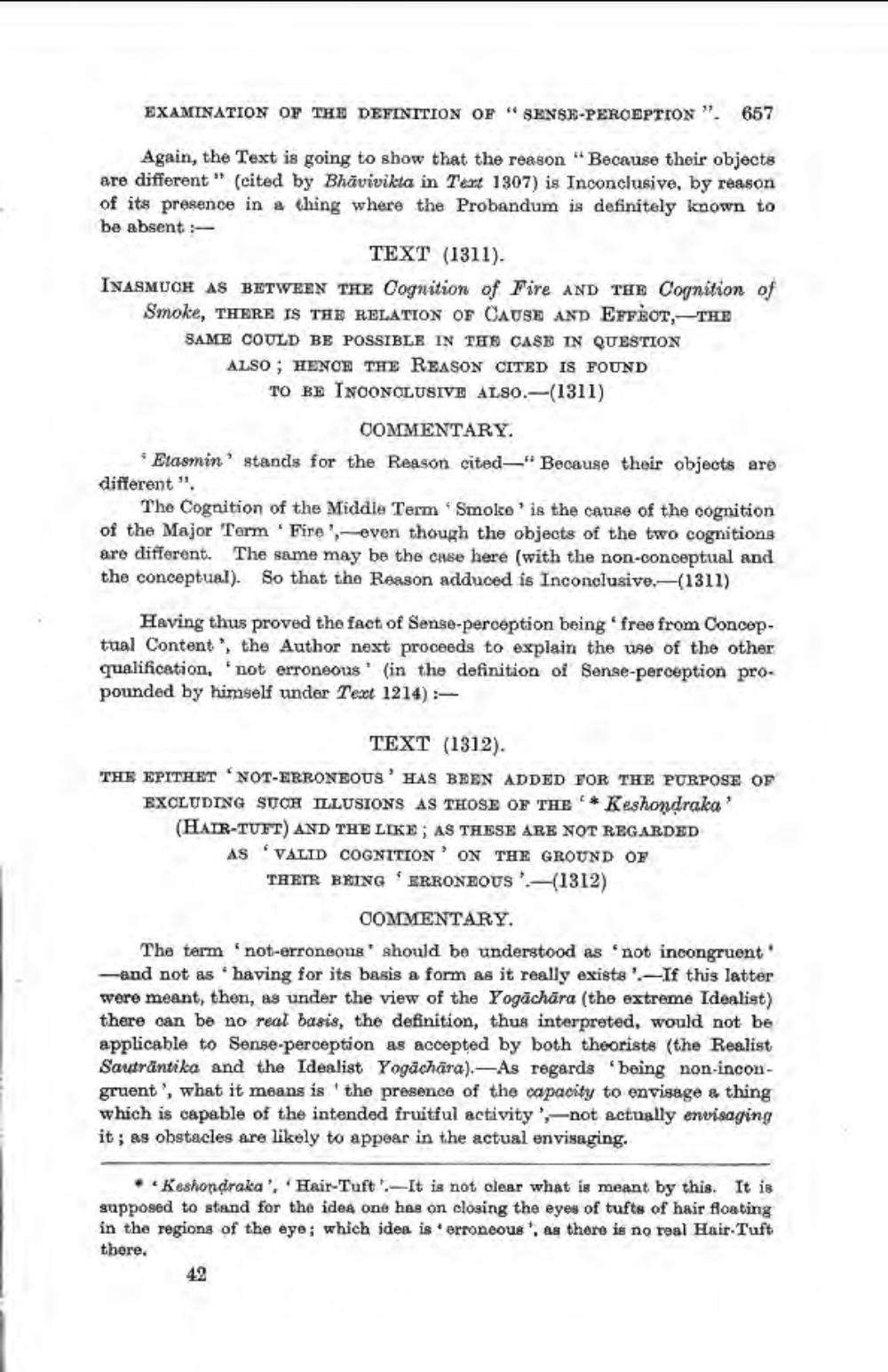________________
EXAMINATION OF THE DEFINITION OF " SENSE-PERCEPTION". 657
Again, the Text is going to show that the reason "Because their objects are different” (cited by Bhāvivikta in Teart 1307) is Inconclusive, by reason of its presence in a thing where the Probandum is definitely known to be absent
TEXT (1311). INASMUCH AS BETWEEN THE Cognition of Fire AND THE Cognition of Smoke, THERE IS THE RELATION OF CAUSE AND EFFÈT, THE SAME COULD BE POSSIBLE IN THE CASE IN QUESTION ALSO; HENCE THE REASON CITED IS FOUND TO BE INOONCLUSIVE ALSO.-(1311)
COMMENTARY. • Elasmin' stands for the Reason cited " Because their objects are different".
The Cognition of the Middle Term Smoke' is the cause of the cognition of the Major Term Fire', even though the objects of the two cognitions are different. The same may be the case here (with the non-conceptual and the conceptual). So that the Reason adduced is Inconclusive.-(1311)
Having thus proved the fact of Sense-perception being free from Conceptual Content, the Author next proceeds to explain the use of the other qualification, 'not erroneous (in the definition of Sense-perception propounded by himself under Text 1214):
TEXT (1312). THE EPITHET 'NOT-ERRONEOUS' HAS BEEN ADDED FOR THE PURPOSE OF EXCLUDING SUCH ILLUSIONS AS THOSE OF THE** Keshondraka' (HAIR-TUFT) AND THE LIKE; AS THESE ARE NOT REGARDED AS 'VALID COGNITION ON THE GROUND OF THEIR BEING ERRONEOUS (1312)
COMMENTARY. The term 'not-erroneons should be understood as not incongruent. -and not as having for its basis a form as it really exists'.-If this latter were meant, then, as under the view of the Yogāchāra (the extreme Idealist) there can be no real basis, the definition, thus interpreted, would not be applicable to Sense-perception as accepted by both theorists (the Realist Sauträntika and the Idealist Yogächāra).-As regards being non-incongruent', what it means is 'the presence of the capacity to envisage & thing which is capable of the intended fruitful activity', -not actually envisaging it; as obstacles are likely to appear in the actual envisaging.
.Keshondraka', Hair-Tuft-It is not clear what is meant by this. It is supposed to stand for the idea one has on closing the eyes of tufts of hair floating in the regions of the eye; which idea is erroneous, as there is no real Hair Tuft there.




